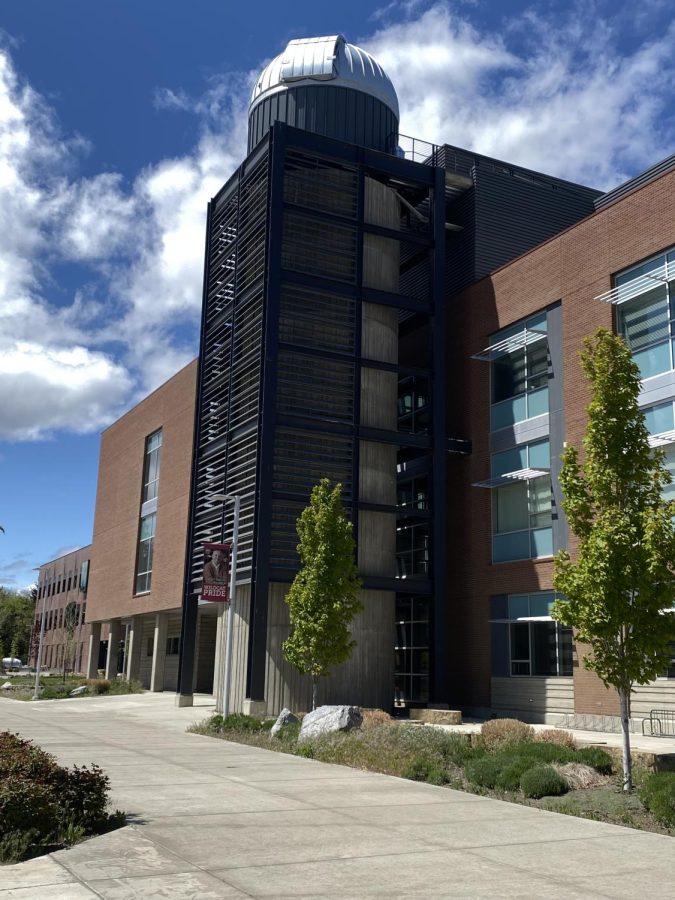Hey! What’s that sticking out of Discovery Hall?
May 18, 2022
That thing sticking out of the top of Discovery Hall is the CWU Observatory. The CWU Observatory is split up into three different components: the Observatory, the Lydig Planetarium and the Telescope.
The CWU Observatory provides outreach opportunities, research opportunities and hands-on training for students. The Observatory also opens up to the public for events to share what their observatory can capture.
“We’re coming out of the pandemic and haven’t had a lot of opportunities in the last couple years for people to go up and come into the planetarium,” CWU Astronomy Club President Christine Anderson said. “A lot of people don’t know it exists.”
The Lydig Planetarium is where CWU holds the events, during which six projectors shoot a 3-D presentation onto the fluorescent blue planetarium, showcasing the night sky visibly. The Lydig Planetarium is 36 feet in diameter and can seat up to 80 people for events. The Lydig Planetarium finished construction in 2015 and remains one of the largest observatories in the state of Washington.
The telescope is what actually captures the photos projected in the planetarium. CWU has a collection of small to medium sized telescopes that are used for celestial research, ranging in size from 10 to 16 inches.
“The actual physics department with the astronomy minor utilizes the telescope for the astronomy classes, specifically the 10-inch gets used for the intro to astronomy class, which is a class that anybody can take,” Anderson said.
CWU has a program with their telescope called WorldWide Telescope, which allows them to project the night skies of Ellensburg and a 3-D model of the solar system, and it can coordinate groups of constellations.
“It shows you the night sky and all the objects in at a better quality than you are going to get in just looking up,” Anderson said. “Although Ellensburg is really great, we’re just outside of that Yakima light pollution and we have light pollution of our own, but we can still see a lot of stars in the night sky.”
The CWU Astronomy Club holds Star Party events one to two times a month, where a presentation is given to the audience and the club shows off all the tools CWU has to offer for celestial research.
During a Star Party event, Anderson said a member of the club will give presentations on space and astronomy related topics on the second and fourth Tuesday of every month during the school year. The presentations are about 30 minutes long and serve to entertain and inform the audience about astronomy.
During Mother’s Day weekend, CWU had Family Weekend, where families came to campus to explore what it is like to be a Wildcat. The observatory made sure to host a Star Party event for the families of the students.
“That was the most packed I have seen the planetarium in probably four years,” Anderson said.

